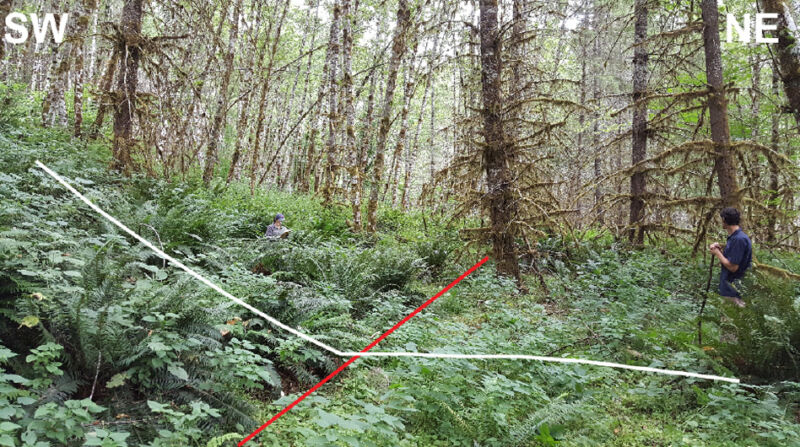Besides the “Big One,” closer faults could also shake Portland

Enlarge / It may not look like much, but that red line marks the Gales Creek fault. (credit: Horst et al./BSSA)
Coastal denizens of the US Pacific Northwest are (or should be!) familiar with the significance of the Big One"-a major earthquake just off the coast that will occur someday. The tectonic plate boundary, where oceanic crust slides downward beneath the North American continent, is capable of producing major shaking and an incredibly dangerous tsunami. This hasn't happened in centuries, leading to a false sense of security, but the evidence is there for events deeper in the past.
But the plate boundary itself isn't the only source of seismic danger. Near Portland, for example, there are a number of smaller active faults. There have even been moderate earthquakes in recent years to serve as reminders. In 1993, a magnitude 5.7 quake just 50 kilometers (31 miles) south of the city caused around $30 million in damage. Here, too, seismologists can look deeper into the past. And it shows that much bigger earthquakes are possible.
Forensic seismologyToday, we measure and quantify earthquakes with seismometers, but it's possible to find physical evidence that testifies to past earthquakes. Paleoseismology relies on the fact that some things move during an earthquake, displacing their position. In the right situation, you can even see about how much the fault moved and put a date on each event. That allows for a rough estimate of earthquake magnitude, as well as the average time between major earthquakes. (Note that this does not mean we can predict the date of the next one. Earthquakes are not clockwork events.)
Read 9 remaining paragraphs | Comments